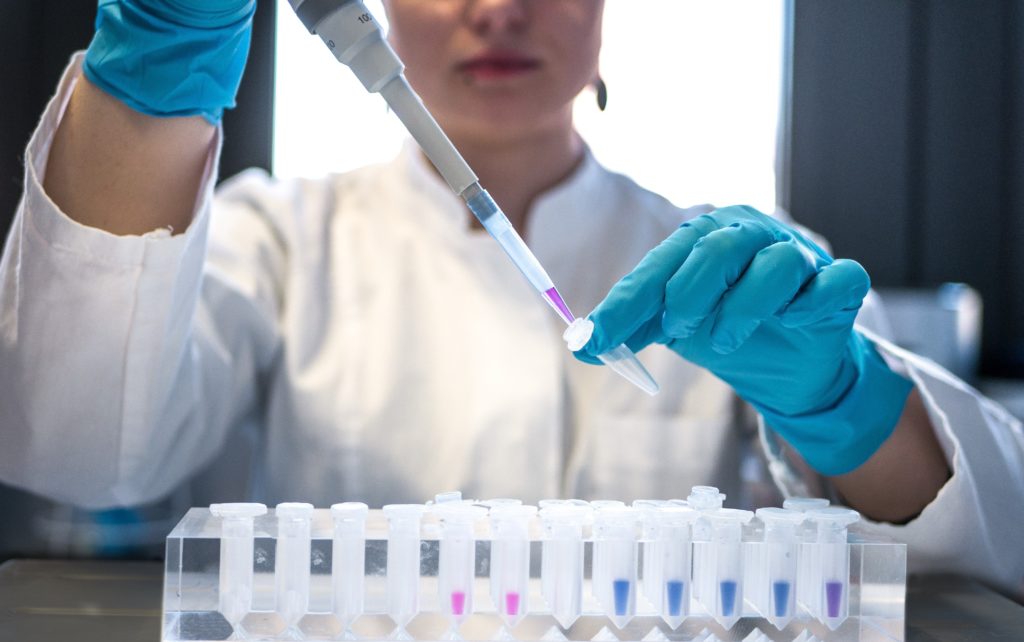But why go thru all the trouble of stem
cells if exosomes are the reason for the benefits? Which must be why no
one seems to be monitoring stem cell survival.
Application of stem cell-derived exosomes in ischemic diseases: opportunity and limitations
The latest here:
Helping Stroke Recovery with Stem Cells
As a stroke occurs, some parts of the brain may be temporarily deprived of oxygen due to the interruption of blood flow or a hemorrhage. This causes the death of millions of neurons. According to the CDC report, almost 87% of all strokes are ischemic strokes, i.e., they are caused by a blockage. The two available treatments for stroke include mechanical thrombectomy and stem cell therapy. In mechanical thrombectomy, the blood clots from the brain are removed by administering anti-clotting drugs and using a catheter-based system. This method is effective within six hours of a stroke.
In cell-based therapy, the mesenchymal stem cells are injected or infused into the patient to fuel the repair process within the site of a stroke. This therapy can be given to a patient with either of two forms of stroke and any time after the cardiovascular accident (CVA). While this method is not common yet, the stem cell stroke clinical trial has proven that it aids in expediting repair mechanisms after a stroke. This article will teach you how this research and development can help stroke patients recover.

Use of stem cells in the medical world
Stem cells can seek out damaged tissues in the body and trigger regenerative and anti-inflammatory effects there. Many scientists worldwide are turning towards stem cells for clinical trials. They are trying to figure out how they can help in stroke recovery. In a research conducted at Stanford University School of Medicine, stem cell transplant therapy was used on the brains of 18 individuals who suffered a stroke (DOI: 10.1161/STROKEAHA.116.012995).
Their brains were injected with SB623 cells (mesenchymal stem cells). These were derived from the bone marrow of two donors. Interestingly, the trial participants showed an average increase of 11.4 points on the Fugl-Meyer Assessment, which is a stroke-specific impairment test. This test proved that they are indeed effective in stroke recovery years after its occurrence, regardless of the person’s age.
The trial also showed motor-function improvements in patients with no immune rejection of cells within and after the therapy.
Treatment of stroke conditions with stem cells
They belong to a class of undifferentiated cells. What makes them special is that they can differentiate into specialized types. In other words, they have the ability to become nerve, cardiac, or blood cells, depending on their location within the body. Another factor that makes them special is that they can divide infinitely.
This makes them ideal for replacing damaged cells due to neurological injuries such as stroke. As per a study by Michael Levy and his colleagues, intravenous injection of allogeneic mesenchymal stem cells is an effective treatment for long-term post-stroke recovery (DOI: 10.1161/STROKEAHA.119.026318). Once they are injected into the brain, it helps promote regeneration and repair the damaged tissue.
| “These [stem] cells don’t actually integrate into the brain long term and become neurons to reconstitute circuits. What they do is pump out very powerful growth factors, molecules and proteins that enhance native mechanisms of recovery, such as new synapses of neurons that are there, new blood vessels, and they have a very profound effect on modulating the immune system. And in that way, what we believe they do is to turn the adult brain into a neonatal or infant brain, which has a lot of ability to recover after injury.” Gary Steinberg, MD, PhD, practices at Stanford Health CareStanford Medicine Children’s Health. |
Results of stem cell treatment
Contrary to popular belief, the injected stem cells by themselves don’t replace the neurons. Instead, they enhance the native mechanisms of recovery in the brain and turn it into a cell-regenerating machine. This treatment also helps stimulate neuroplasticity, which reorganizes the circuits in the brain. Here is the evidence:
- Some participants in the study conducted by Michael Levy and his colleagues regained their ability to walk.
- In Dr Steinberg’s clinical study, a substantial motor improvement was reported by participants.
It was proved that this treatment increases functional recovery regardless of the person’s age or the type of stroke that they suffered.
| “Stem cell research is the key to developing cures for degenerative conditions like Parkinson’s and motor neuron disease from which I and many others suffer.” Stephen Hawking, professor, scientist, and astrophysicist. |
Key takeaways
Stem cell therapy involves injecting separated and cultivated adult stem cells into the bloodstream where they reach the site of injury, or directly into the brain. What is important, there are no serious side effects from this therapy. Once the treatment is complete, it improves the natural capacity of the brain to regrow neurons.
The chronic stroke patients who were provided with this therapy demonstrated substantial recovery even long after the occurrence. Hence, this treatment has great potential to restore physical functions after a period of immobility. This gives hope to those who have not been able to achieve progress in recovery after a stroke using conventional rehabilitation methods.
No comments:
Post a Comment